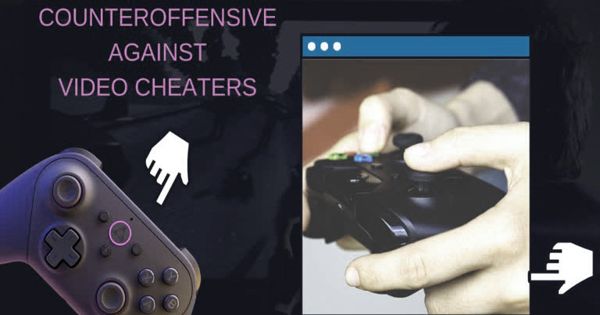Computer scientists have devised a new tactic against video game players who are cheating. Researchers have improved their approach to detecting cheaters using the famous Counter-Strike first-person shooter game. But the mechanism will function with any massively multiplayer online (MMO) game that sends data traffic to a central server.
Computer scientists at the University of Texas in Dallas have devised a new tactic against video game players who cheat. Researchers have improved their approach to detecting cheaters using the famous Counter-Strike first-person shooter game. But the mechanism will function with any massively multiplayer online (MMO) game that sends data traffic to a central server.
The University of Texas at Dallas (UT Dallas) computer scientists developed a countermeasure against video game cheaters. Their research was published online in IEEE Transactions on Dependable and Secure Computing.
Counter-Strike is a series of games in which players collaborate in counter-terrorist teams to secure plant sites, defuse explosives, and rescue hostages. Players can win in-game money to purchase more powerful weapons, which is the secret to victory. There are a number of app cheats available online for the game.
“Often when you’re playing against players who use cheating, you can say, but sometimes it can’t be obvious,” said Md Shihabul Islam, UT Dalla’s computer science doctoral student at the Erik Jonsson School of Engineering and Computer Science and lead author of the research, who plays Counter-Strike for fun. “It isn’t fair to the other clubs.” In addition to fair play, cheating may also have an economic effect as disgruntled players leave to play other sports, Islam added.
The previous analysis relied on decrypted game logs to detect hacking after the event, whilst the UT Dallas team’s methodology analyzed encrypted data flow to and from the central server in real-time. Twenty UT Dallas students have downloaded the Counter-Strike game and three app cheats. Researchers tracking their data flow detected patterns of cheating; the data was fed to a machine-learning algorithm to teach them to anticipate cheating. The researchers said that they have adapted their model to operate on larger gamers’ communities.

Cheating cases will also have significant implications for athletics, a fast-growing market with annual sales of nearly $1 billion. Cheating will result in fines against teams and players, including disqualification, loss of prize money, and a ban on potential competition, according to the UK-based Esports Integrity Commission.
Detecting hacking in MMO games can be difficult since the data from a player’s machine to a game server is encrypted. The previous analysis focused on decrypted game logs to spot cheating on the facts. The Dallas UT analysis methodology removes the need for decrypted data and thus analyzes encrypted data communication to and from the server in real-time. “Players who cheat submit traffic in another direction,” said Dr. Latifur Khan, author of the report, professor of computer science, and director of the Big Data Analytics and Management Lab at UT Dallas. “We’re trying to catch those features.”
For the report, 20 students in the UT Dallas class in Cyber Security Essentials for Practitioners downloaded Counter-Strike and three software cheats: an aimbot that randomly attacks an enemy; a pace hack that helps the player to run faster; and a wallhack that makes the walls translucent so that players can clearly see their opponent. Researchers set up a project-based server to ensure that the activities of students do not affect other online matches.
Researchers analyzed the game traffic from and to the dedicated server. Data moves by packets or packages of content. The packets will be of varying types, depending on the contents. Researchers studied the characteristics, including the number of incoming and outgoing packets, their duration, the time they were transmitted, their path, and the number of packets in a burst, a group of consecutive packets.
By tracking data traffic from student players, researchers have detected patterns that suggest cheating. They then used the knowledge to train a machine-learning algorithm, a type of artificial intelligence, to predict cheating based on the patterns and features of the game data.
The researchers have adapted their mathematical model, built on a specific set of gamers, to fit with larger populations. Part of the cheat-detection system entails routing data traffic to a parallel processor, a graphics processing unit, to speed up the operation and remove the workload from the main server’s central processing unit.
Researchers are planning to expand their work to develop an approach for games that do not use the client-server architecture and to make the detection mechanism more stable. Islam said that game companies might use the Dallas UT methodology on their own data to train gaming algorithms to detect cheating. If cheating is observed, the machine may take corrective action.
“After identification,” Khan said, “we will alert and gracefully boot the player out if they continue cheating for a set time period. “Our goal is to ensure that games like Counter-Strike remain enjoyable and equal to all players.”















